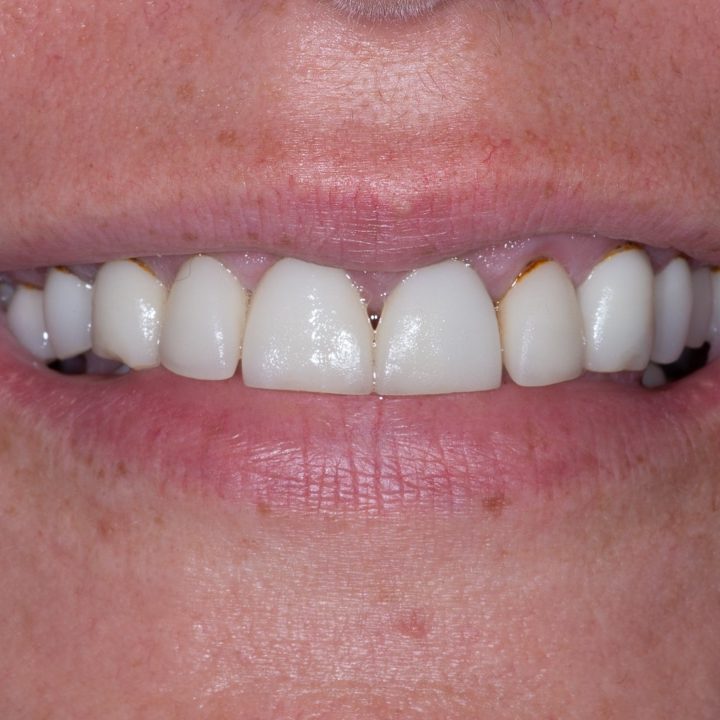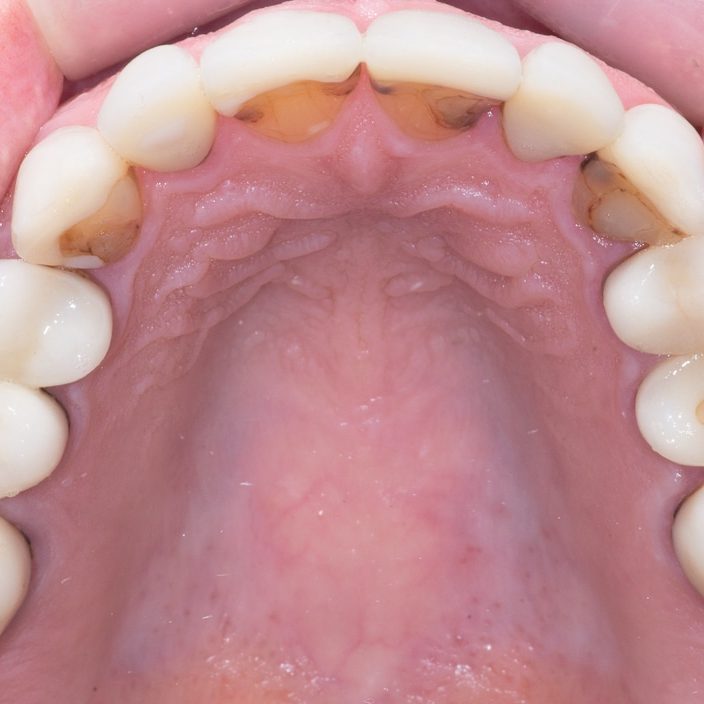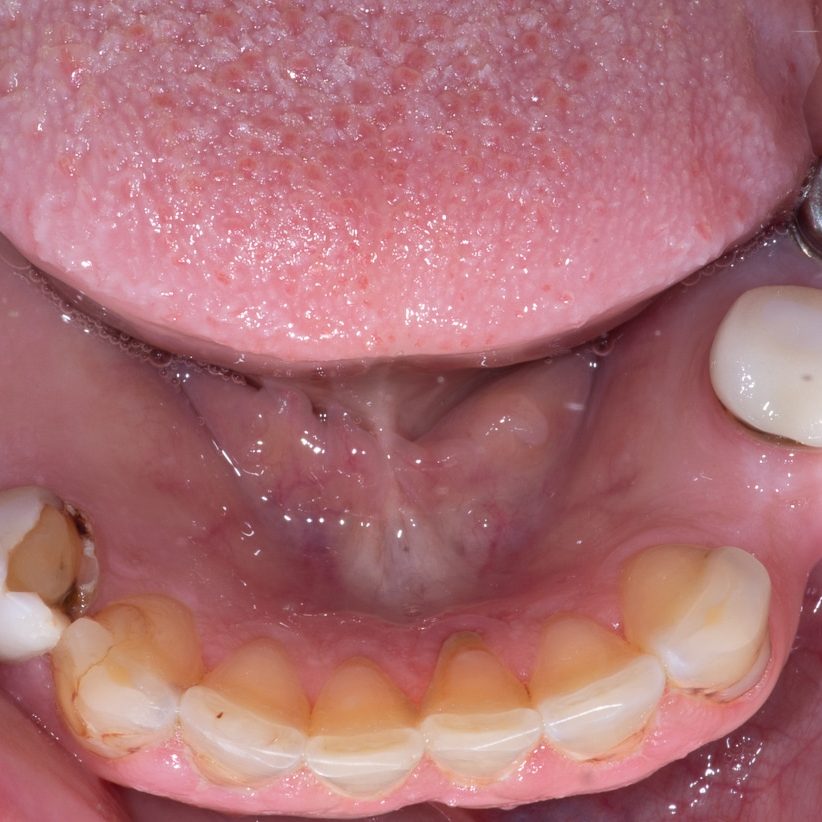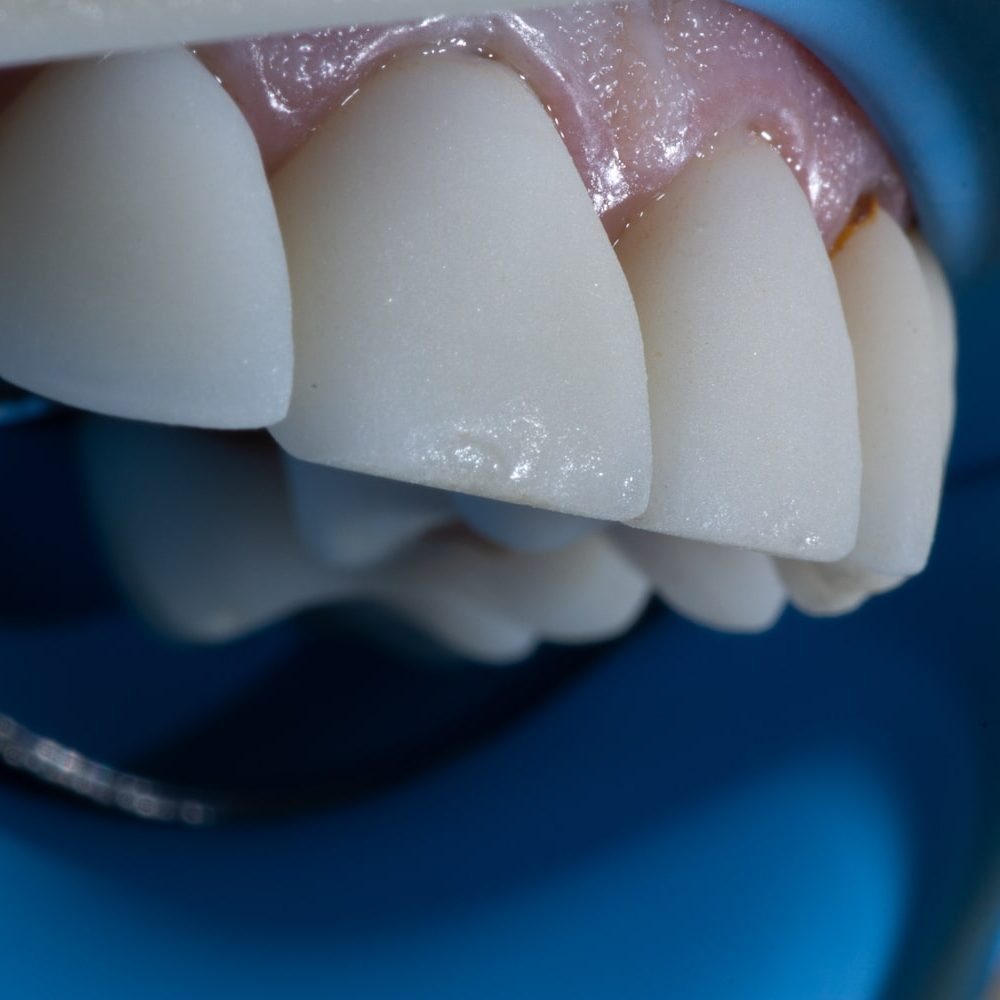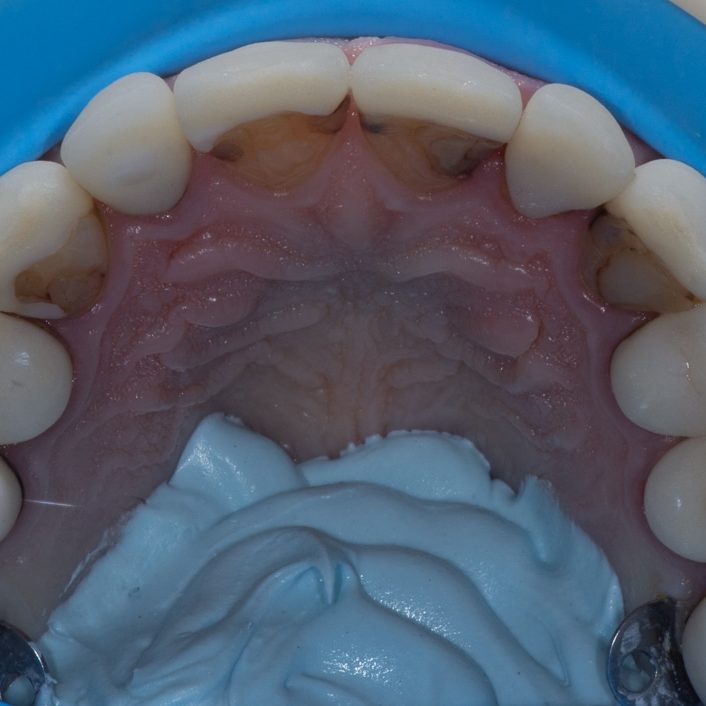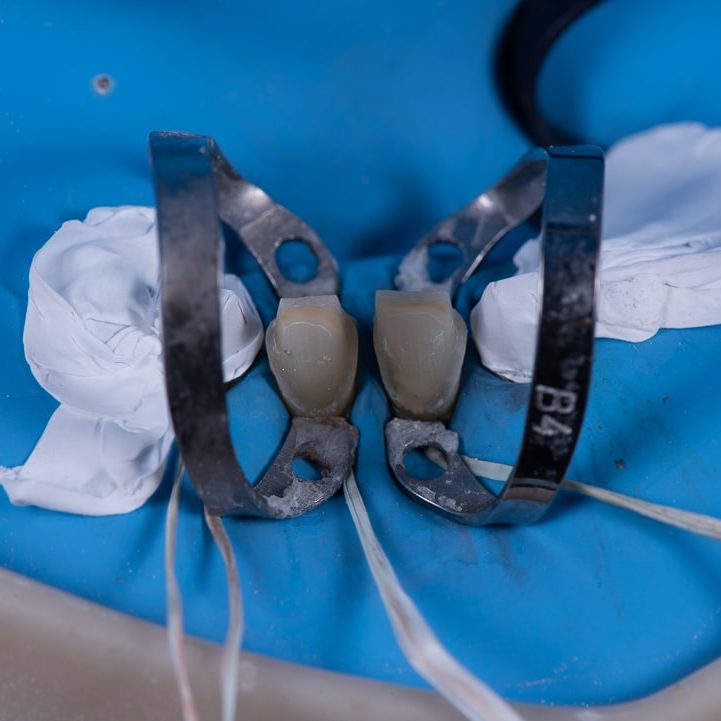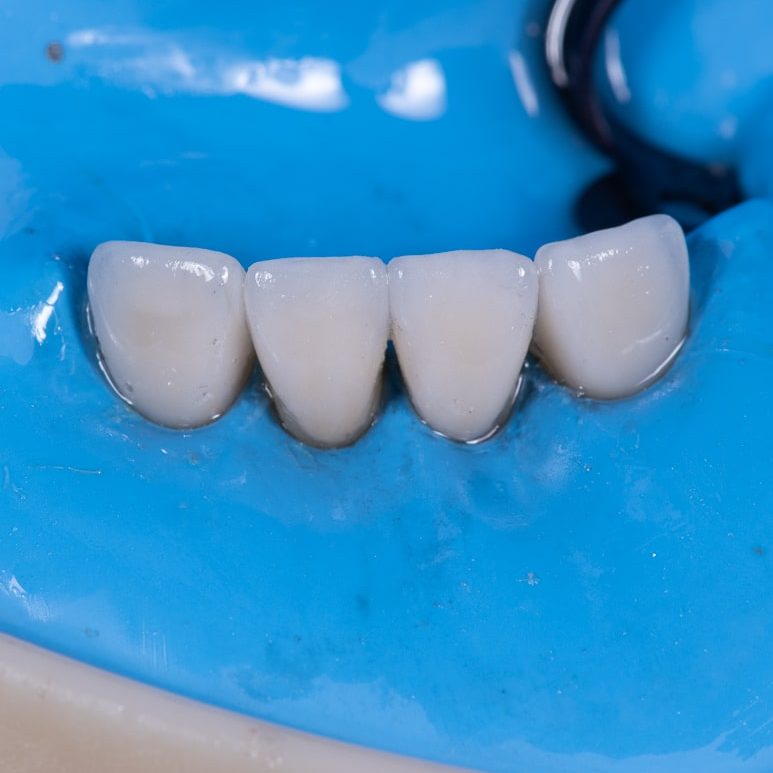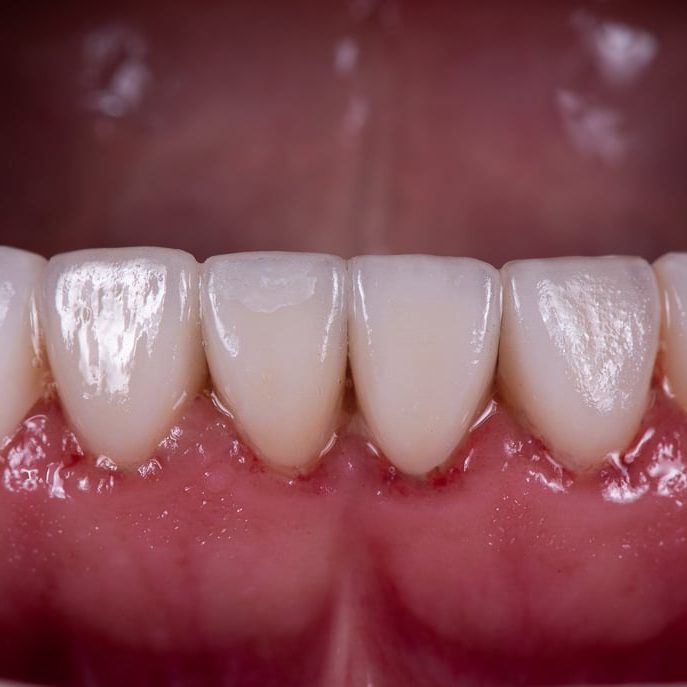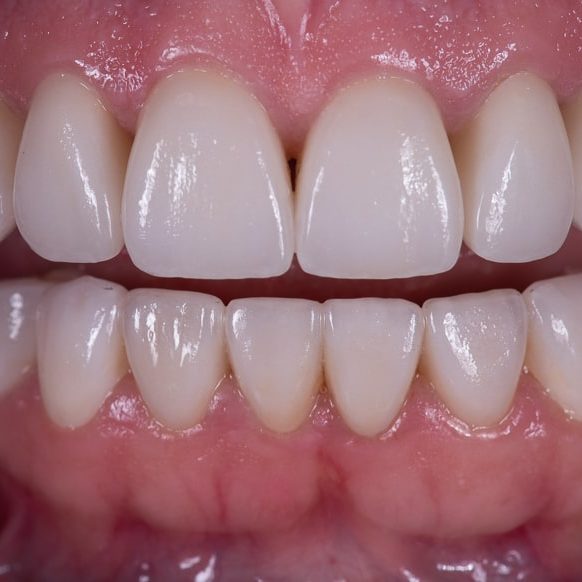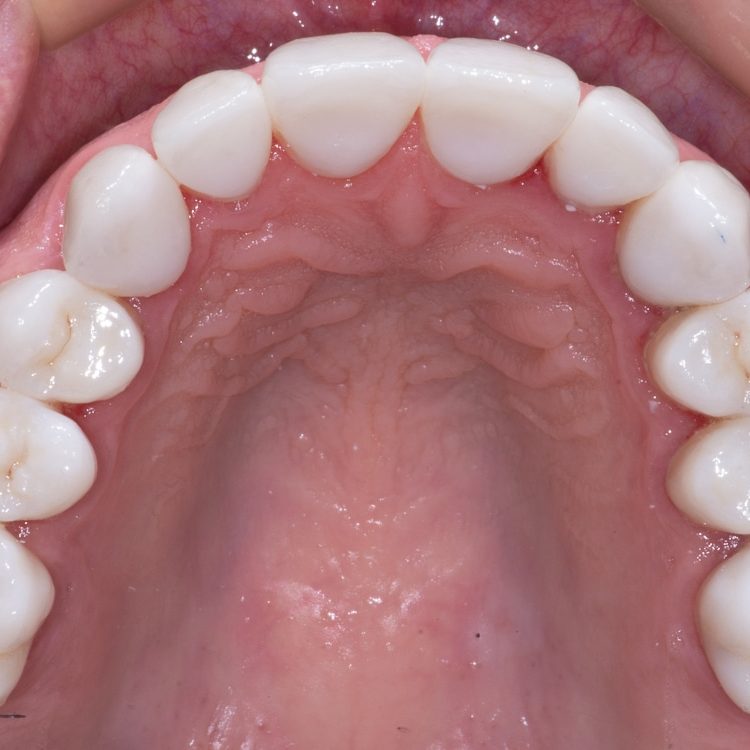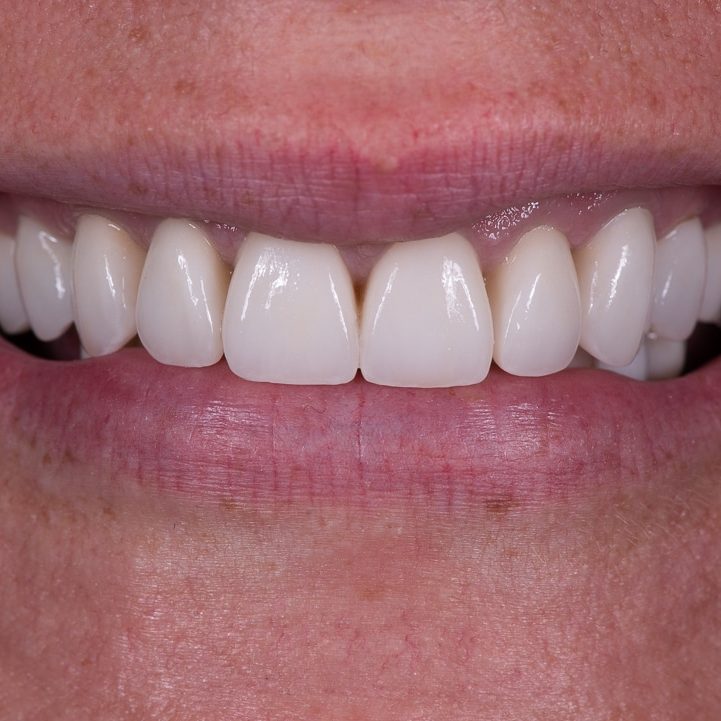Case Study #8
Overview of Case: This patient presented with older crowns that were failing. New cavities were discovered around the margins of the crowns, and the crowns themselves showed signs of breakdown. The existing crowns were likely fabricated from inferior materials. To comprehensively address these concerns, our dental team performed a full mouth rehabilitation. Throughout the procedure, a rubber dam was utilized to maintain a dry operating field and prevent accidental swallowing of any dental debris. This isolation technique was particularly crucial during the placement of the ¾ crowns on the lower teeth, as it ensured optimal bonding and longevity of the restorations. Although some minor gum irritation occurred immediately following removal of the rubber dam, it resolved within 2-3 days without requiring pain medication. Ultimately, the patient was delighted with the final result: a restored smile with excellent function and aesthetics.
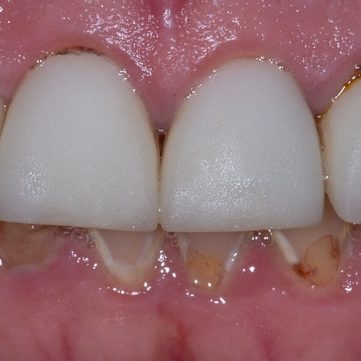
Step 2
Analysis
Analysis: As you could see in these pictures, there were new cavities forming around the edges of the existing crowns, and the crowns themselves were breaking down. These problems were likely due to poor material selection for the previous crowns.

